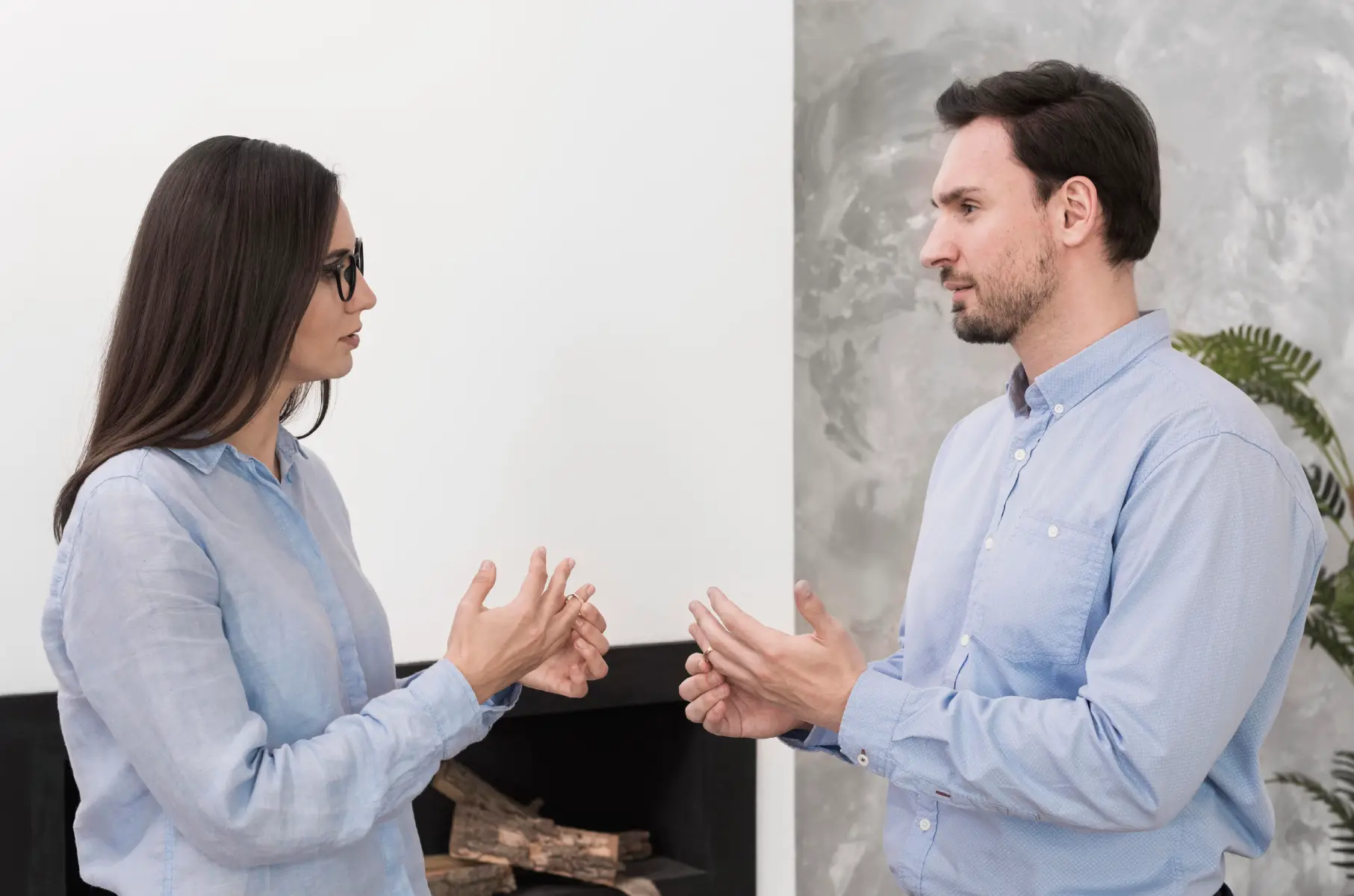Romantic relationships often serve as a mirror, reflecting our emotional patterns, attachment tendencies, and vulnerabilities. For individuals with anxious or avoidant attachment styles, navigating a close, intimate relationship can feel like walking a tightrope. One partner may crave closeness and emotional reassurance (anxious attachment), while the other may feel overwhelmed by too much intimacy, retreating into emotional distance (avoidant attachment).
This dynamic, commonly referred to as the anxious-avoidant trap, can lead to cycles of miscommunication, frustration, and unmet needs if left unaddressed. However, understanding how these attachment styles interact, and developing strategies to bridge gaps in communication, can transform relationships from tense and turbulent to trusting and harmonious.
In this article, we’ll explore the characteristics of anxious and avoidant attachment styles, the challenges they can create in relationships, and actionable steps to overcome these struggles and work toward secure, balanced bonds.
What Are Anxious and Avoidant Attachment Styles?
Attachment styles develop in early childhood based on how a caregiver responded to a child’s emotional and physical needs. In adulthood, these styles influence how we view relationships and manage intimacy, trust, and closeness. Let’s take a closer look at anxious and avoidant attachment styles.
Anxious Attachment
People with an anxious attachment style fear abandonment and may feel insecure about their partner’s commitment. They often rely on close relationships to feel validated and secure.
Key Traits:
- Strong emotional dependency on their partner.
- A need for constant reassurance of love and loyalty.
- Overthinking or obsessing over perceived relationship problems.
- Fear of being left or rejected, which can lead to clingy or controlling behaviours.
These tendencies can place significant emotional pressure on both the individual and their partner, sometimes creating tension in the relationship.
Avoidant Attachment
Individuals with an avoidant attachment style value independence and self-sufficiency, often at the expense of emotional closeness in relationships. They may struggle to trust others or feel uncomfortable relying on their partner for emotional support.
Key Traits:
- Discomfort with vulnerability or emotional intimacy.
- Preference for independence and a fear of losing autonomy in relationships.
- Tendency to withdraw or detach during emotional conflicts.
- Avoidance of discussions about deep feelings or commitment.
While avoidant individuals may appear strong and self-reliant, their need to maintain distance often prevents them from fully connecting with their partner.
The Anxious-Avoidant Dynamic
Romantic relationships between individuals with anxious and avoidant attachment styles can be challenging because their emotional needs and fears are often at odds with one another.
- The anxiously attached partner craves closeness, emotional intimacy, and constant reassurance.
- The avoidantly attached partner feels suffocated by intimacy and retreats when their partner demands too much emotional connection.
This creates a push-pull dynamic, where:
- The anxious partner chases intimacy, leading the avoidant partner to withdraw further.
- The avoidant partner’s withdrawal reinforces the anxious partner’s fears of abandonment, causing them to pursue even more intensely.
Over time, this cycle can lead to frustration, misunderstanding, and emotional exhaustion for both partners.
Challenges of the Anxious-Avoidant Dynamic
While opposites often attract, the anxious-avoidant pairing can feel like a tug-of-war, with each partner inadvertently triggering the other’s insecurities. Here are some common challenges faced by couples with this dynamic:
1. Misaligned Emotional Needs
- The anxious partner needs constant reassurance to feel loved and secure, while the avoidant partner values independence and low emotional engagement.
- These conflicting needs leave both partners feeling unfulfilled and misunderstood.
2. Escalating Conflict
- The anxious partner’s persistence in addressing issues may feel overwhelming to the avoidant partner, who may shut down or withdraw further.
- The avoidant partner’s silence or retreat may feel like rejection to the anxious partner, leading to emotional outbursts or confrontational conversations.
3. Fear of Vulnerability
- The anxious partner may fear that their vulnerability will scare the avoidant partner away.
- The avoidant partner may fear that being vulnerable will lead to losing their independence or being emotionally overwhelmed.
4. Insecure Communication
- An anxious partner may resort to over-communicating, such as texting excessively or constantly seeking validation.
- An avoidant partner may under-communicate, avoiding difficult discussions or sharing limited emotional insight.
5. Difficulty Building Trust
- The anxious partner may struggle to trust the avoidant partner’s engagement, interpreting their withdrawal as a lack of care.
- The avoidant partner may struggle to trust the anxious partner’s ability to respect their need for space and independence.
How to Break the Cycle: Strategies for Balance
Although the anxious-avoidant dynamic presents challenges, it’s possible to overcome these struggles and build a healthier, more balanced relationship. Here’s how:
1. Understand Your Attachment Styles
Gaining an understanding of your own attachment style—and your partner’s—can provide clarity about why you each behave the way you do. Reflect on questions like:
- “What triggers my anxiety or need to withdraw in this relationship?”
- “How do I typically respond when I’m feeling insecure?”
By exploring your attachment style, you can gain greater empathy for yourself and your partner.
2. Communicate Openly and Honestly
Clear, compassionate communication is essential for balancing different attachment needs. Practice:
- Expressing your needs clearly and calmly. For example, an anxious partner might say, “I feel insecure when I don’t hear from you for hours. Can we create a plan to check in during the day?”
- Listening without defensiveness. An avoidant partner might respond, “I understand you feel more secure with communication. Let’s figure out what works for both of us.”
3. Challenge Harmful Patterns
Both anxious and avoidant partners must identify and challenge behaviours that perpetuate the push-pull dynamic:
- For anxious partners: Resist the urge to seek constant validation. Focus instead on self-soothing techniques, such as mindfulness or deep breathing, to build emotional resilience.
- For avoidant partners: Learn to open up gradually, even if it feels uncomfortable. Remind yourself that emotional vulnerability is not weakness—it’s a foundation for deeper connection.
4. Practice Emotional Regulation
Emotionally charged situations can quickly spiral out of control. Develop emotional regulation strategies, such as:
- Pause before reacting: Avoid reacting impulsively to perceived threats (e.g., an unanswered text).
- Self-awareness: Ask yourself, “Am I reacting based on fact or my fear of abandonment/rejection?”
5. Set Boundaries That Work for Both Partners
Healthy boundaries help both partners feel respected and secure. For example:
- An avoidant partner can set boundaries around alone time, assuring the anxious partner that emotional distance does not equal disinterest.
- An anxious partner can set boundaries around communication, learning to express their needs without overwhelming their partner.
6. Commit to Self-Growth
Ultimately, the key to breaking the anxious-avoidant cycle lies in addressing the root causes of insecurity within yourself. Personal growth may include:
- Therapy to explore unresolved childhood experiences or attachment wounds.
- Journaling or self-reflection to better understand and challenge harmful behaviours.
- Practicing self-compassion to improve self-esteem and reduce dependency on your partner for validation.
7. Engage in Couples Therapy
Couples therapy provides a supportive environment for both partners to work through their attachment struggles and develop healthier communication habits. A skilled therapist can:
- Help the anxious partner express their needs constructively, without overwhelming the avoidant partner.
- Help the avoidant partner build tolerance for emotional intimacy and explore ways to create a sense of safety in the relationship.
Final Thoughts
Navigating a relationship between anxious and avoidant partners can be challenging, but it’s far from impossible. With intention, effort, and self-awareness, both partners can break free from unhealthy cycles and work toward a balanced, secure relationship. Understanding each other’s attachment needs and focusing on growth creates an opportunity for deeper emotional connection and harmony.
At Pinnacle Therapy, we specialize in helping individuals and couples address attachment struggles and develop healthier relationships. If you’re ready to transform your relationship dynamic, contact us today at www.pinnacletherapy.co.uk. Together, we’ll help you build the connection and balance you both deserve.









